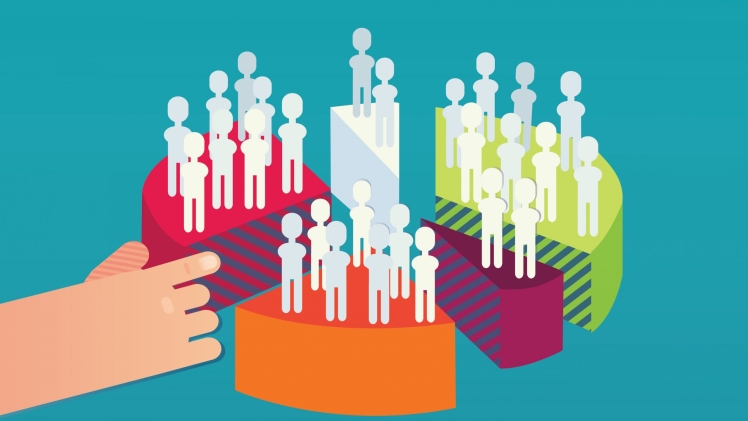Customer segmentation is the process of dividing a customer base into groups based on common characteristics, such as demographics, behavior, preferences, or needs. Customer segmentation can help businesses tailor their marketing campaigns, products, services, and pricing to different customer segments and increase customer satisfaction, loyalty, and retention.
Customer churn is the rate at which customers stop doing business with a company or stop using a product or service. Customer churn can have a negative impact on a business’s revenue, profitability, and growth. Customer churn can be influenced by various factors, such as customer satisfaction, product quality, customer service, competition, price, or changing customer needs.
In this article, we will discuss how customer segmentation can help businesses reduce customer churn and improve customer retention. We will also explore some of the best practices and tools for customer segmentation and churn prediction.
How Customer Segmentation Can Reduce Customer Churn
Customer segmentation can help businesses reduce customer churn by:
– Identifying the most valuable and loyal customer segments and focusing on retaining them.
– Understanding the needs, preferences, and pain points of different customer segments and offering them personalized solutions that meet their expectations and solve their problems.
– Creating targeted marketing campaigns and messages that resonate with different customer segments and increase their engagement and loyalty.
– Providing different incentives and rewards for different customer segments based on their behavior and value to the business.
– Detecting the signs of customer dissatisfaction or attrition and taking proactive actions to prevent them from leaving.
Best Practices for Customer Segmentation and Churn Prediction
Some of the best practices for customer segmentation and churn prediction are:
– Define clear and measurable goals and objectives for customer segmentation and churn prediction. For example, what are the key metrics that you want to improve, such as retention rate, lifetime value, or revenue per customer?
– Collect and analyze relevant data from various sources, such as transactional data, behavioral data, feedback data, or social media data. Use data cleansing and validation techniques to ensure the quality and accuracy of the data.
– Choose the appropriate segmentation criteria and methods based on your goals and data. For example, you can use demographic segmentation (such as age, gender, location), behavioral segmentation (such as purchase frequency, usage frequency, loyalty), psychographic segmentation (such as personality, lifestyle, values), or benefit segmentation (such as convenience, quality, price).
– Use statistical techniques and machine learning algorithms to segment your customers and predict their churn probability. For example, you can use cluster analysis to group your customers based on their similarities or differences. You can also use classification algorithms (such as logistic regression, decision trees, or neural networks) to classify your customers into churners or non-churners based on their features or attributes.
– Evaluate the effectiveness and performance of your segmentation and prediction models using various metrics, such as accuracy, precision, recall, or F1-score. You can also use techniques such as cross-validation or A/B testing to compare different models or approaches.
– Monitor and update your segmentation and prediction models regularly to account for changes in customer behavior or market conditions. You can also use feedback loops to collect new data and improve your models over time.
Tools for Customer Segmentation and Churn Prediction
There are many tools available in the market that can help businesses with customer segmentation and churn prediction. Some of the popular ones are:
– Google Analytics: A web analytics tool that can help businesses track and analyze their website traffic and user behavior. Google Analytics can also help businesses segment their customers based on various criteria, such as demographics, interests, behavior, or conversions.
– HubSpot: A marketing automation tool that can help businesses create and manage their marketing campaigns and activities. HubSpot can also help businesses segment their customers based on various criteria, such as lifecycle stage, persona, source, or engagement.
– Salesforce: A customer relationship management (CRM) tool that can help businesses manage their customer interactions and relationships. Salesforce can also help businesses segment their customers based on various criteria, such as industry, revenue, location, or account type.
– IBM Watson: A cognitive computing platform that can help businesses leverage artificial intelligence (AI) and machine learning to analyze large amounts of data and generate insights. IBM Watson can also help businesses segment their customers and predict their churn using various techniques, such as natural language processing (NLP), sentiment analysis, or predictive analytics.
Conclusion
Customer segmentation is a powerful strategy that can help businesses reduce customer churn and improve customer retention. By understanding the needs and preferences of different customer segments, businesses can offer them personalized solutions that increase their satisfaction and loyalty. Customer segmentation can also help businesses identify the signs of customer dissatisfaction or attrition and take proactive actions to prevent them from leaving. Businesses that adopt customer segmentation can gain a competitive edge and achieve long-term success.

